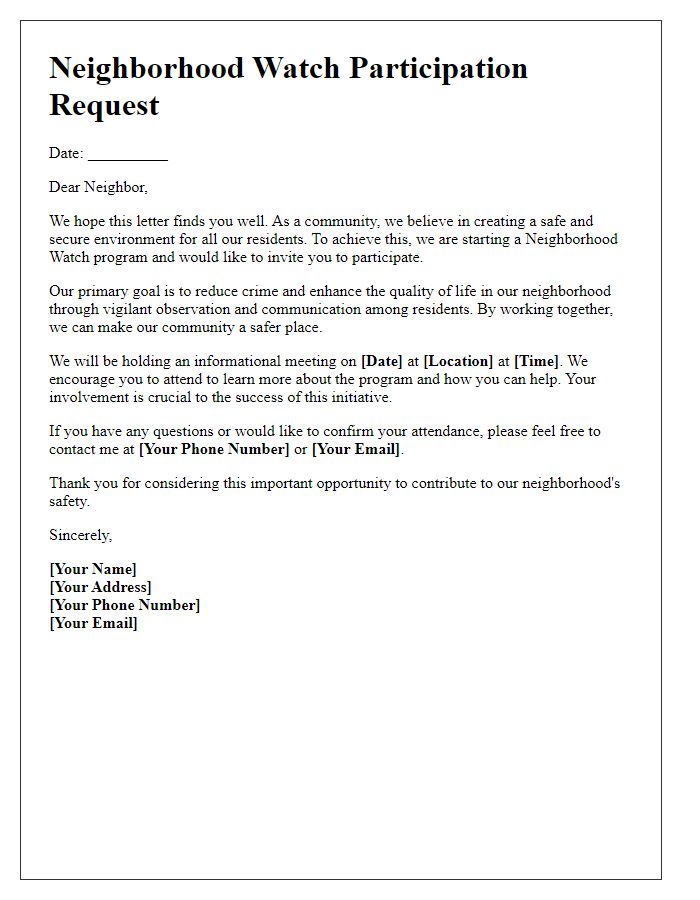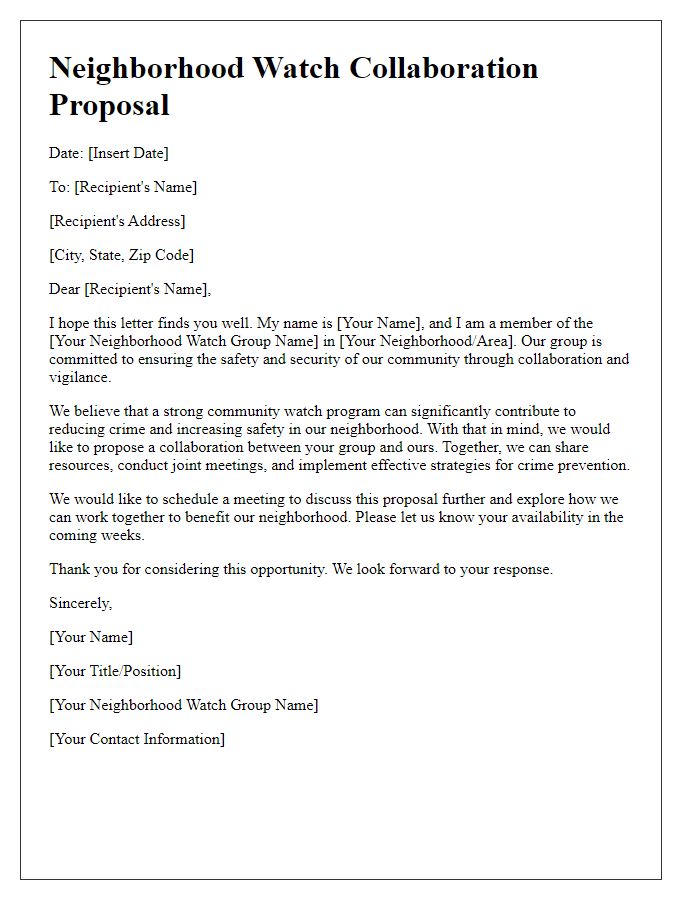Are you ready to take an active role in keeping our community safe? Forming a neighborhood watch is not just about crime prevention; it's about building connections and fostering a sense of belonging among neighbors. By working together, we can create a vigilant and supportive environment that benefits everyone. Join us as we explore the steps to establish your very own neighborhood watch, and find out how you can make a difference in your area!

Purpose and Objectives
The formation of a neighborhood watch program aims to enhance community safety and foster cooperation among residents. By establishing a visible presence in the area, such as community patrols and regular meetings at the local community center, members can deter criminal activity and promote awareness of safety concerns. The objectives include increasing communication among neighbors, sharing crime prevention tips, organizing educational workshops on safety protocols, and working collaboratively with local law enforcement agencies, such as the (City Police Department), to address specific issues like vandalism or property theft. Engaging the community through events, such as safety fairs or clean-up days, strengthens bonds while cultivating a proactive approach to crime prevention.
Meeting Details and Schedule
The neighborhood watch formation meeting is scheduled for November 15, 2023, at 7 PM in the community center located at 123 Elm Street, Springfield. Residents from all surrounding blocks, particularly those near Maple Avenue and Oak Street, are encouraged to attend. This gathering aims to discuss crime prevention strategies, community involvement, and the establishment of a cooperative communication network among neighbors. Important topics include safety patrol schedules, contact information for local law enforcement, and emergency response planning. Attendees will also receive resource packets that provide information about crime statistics in Springfield, the role of neighborhood watch programs, and best practices for maintaining a safe community environment.
Roles and Responsibilities
Neighborhood watch programs enhance community safety by encouraging resident involvement. Organizing a neighborhood watch requires defining key roles such as Coordinator, responsible for planning meetings and communicating with local law enforcement; Block Captains, who serve as liaisons between residents and the coordinator, fostering relationships within smaller groups; and Members, who actively participate in watch activities, report suspicious behavior, and adhere to safety protocols. Regular training sessions, typically held bi-monthly, help members stay informed about crime trends and personal safety measures. Engaging local police departments can offer additional support and resources, enhancing the overall effectiveness of the neighborhood watch initiative. Establishing clear communication channels, such as community bulletins or social media groups, strengthens the flow of information and encourages a vigilant community spirit.
Communication Methods
Effective communication methods are vital for the successful establishment of a neighborhood watch program. Utilizing platforms such as Nextdoor, a social networking service specifically designed for local communities, allows residents to share concerns and updates instantly. Local meetings, held monthly at community centers or parks, foster face-to-face interactions, encouraging neighbors to discuss safety strategies. Additionally, group messaging apps like WhatsApp can serve as immediate channels for reporting suspicious activities, ensuring quick responses. Printed newsletters distributed bi-monthly provide summarized updates on events or emerging issues within the community. In-person patrols, organized by volunteers, can further strengthen ties among residents while increasing visibility and accountability.
Contact Information
Establishing a neighborhood watch program involves gathering important contact information to ensure effective communication and collaboration among community members. Key elements include names, addresses, phone numbers (preferably mobile for immediate communication), and email addresses for each participant in the program. A dedicated point of contact is crucial for coordinating meetings and relaying vital information or updates about safety issues. Additionally, the inclusion of local law enforcement contact details (such as the local police station's non-emergency number) enhances responsiveness in case of suspicious activities. By compiling this information, residents can foster a secure environment, promote vigilance, and strengthen neighborhood ties.













Comments